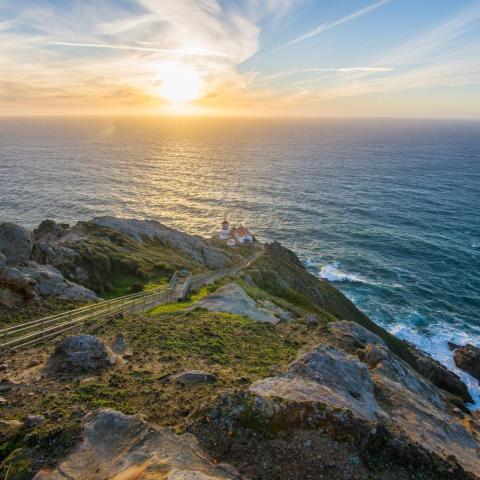
Before and after images show how explosives successfully reduced massive boulders in the Elwha River below the Glines Canyon dam site to rubble/NPS
Massive boulders, some upwards of two stories tall, were reduced to rubble in the Elwha River in Olympic National Park by blasting experts as part of the continued restoration of the river channel.
The boulders were determined to have fallen into the channel sometime after the Glines Canyon Dam was built in 1927 and before demolition of the dam got under way in 2011. Between August 31 and October 8, workers designed and detonated a total of seven controlled blasts, breaking about 14 large boulders into rubble, a park release said.
The boulders, most weighing over 100 tons, were all significantly larger than what the river could be expected to move downstream, even during high flows. The two largest boulders were each as tall as a two-story building and about 30 feet wide and estimated to weigh 1,000 tons or more. As a result of the rock demolition project, the 14 boulders were reduced to rocks less than two feet in diameter. Park scientists will continue to monitor the river channel through the coming high flow season and will assess the river channel next summer.
Based on comparisons of historic and recent photos, and historic and recent water levels, geologists have determined that a large rockfall occurred sometime after the Glines Canyon Dam was completed in 1927 and before dam removal began in 2011. A significant portion of the canyon's east wall broke off, sending large boulders into the river channel, slowing and changing the river's flow through the area.
While the dam removal process restored the river's natural flow, allowing it to carry sediment downstream from the former Lake Mills reservoir, Park Service officials said the boulders in the channel caused sediment and debris to accumulate above the rockfall, creating a barrier to upstream fish passage.
Chinook salmon, steelhead and bull trout are known to have migrated above the Glines Canyon site, with some reaching as far upstream as Geyser Valley. Removal of the obstructing boulders will further restore the river channel through Glines Canyon, aiding the overall fish and ecosystem restoration of the Elwha River, the Park Service said.
Funding for the project was provided by NOAA Fisheries and the National Park Service.




 Support Essential Coverage of Essential Places
Support Essential Coverage of Essential Places







Add comment